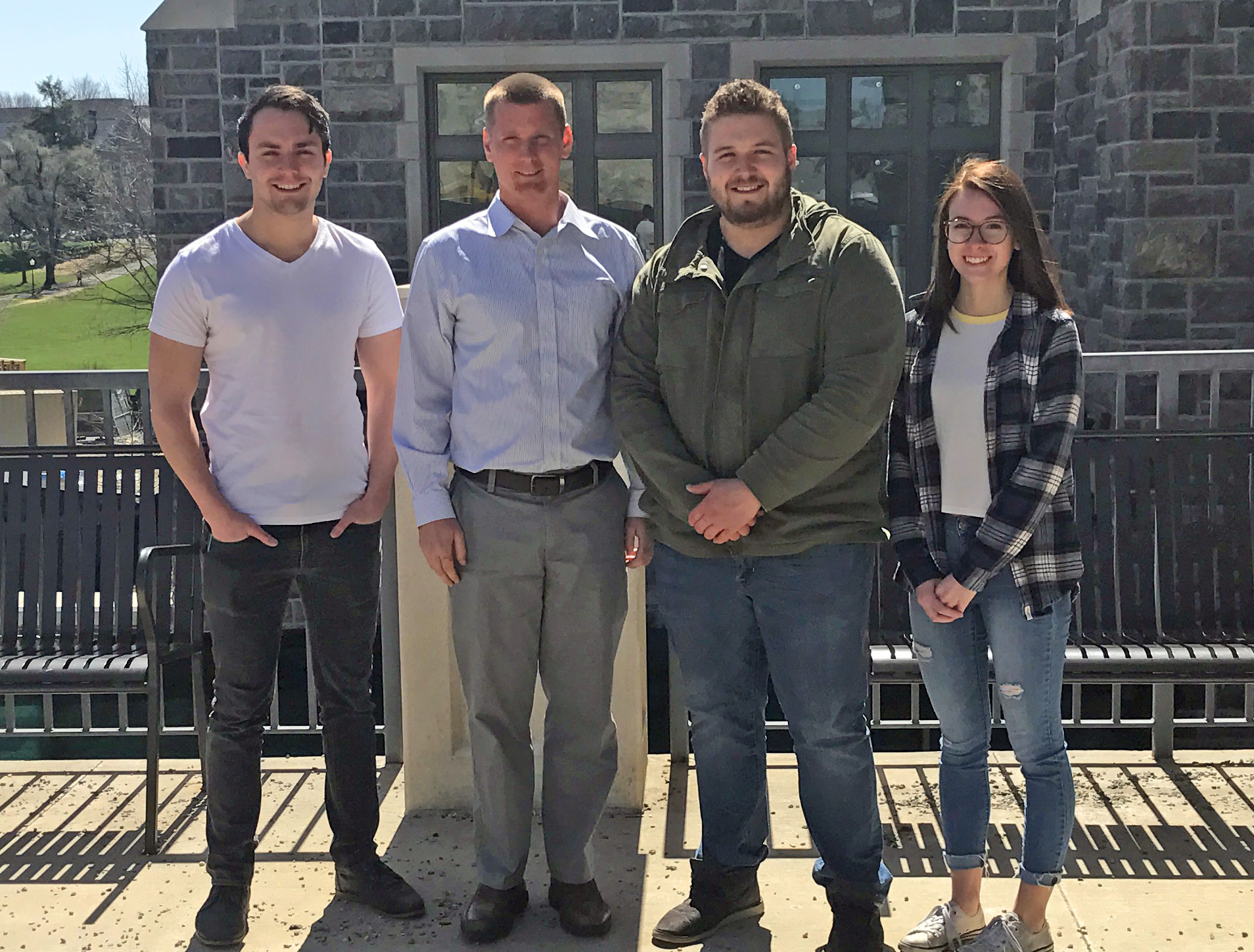Dr. John B. Matson
 Department of Chemistry
Department of Chemistry
Virginia Polytechnic Institute and State University
Tapered Bottlebrush Polymers: A New Polymer Topology
Dr. John B. Matson is an assistant professor of Chemistry at Virginia Tech in Blacksburg, Virginia. His American Chemical Society Petroleum Research Fund Doctoral New Investigator (DNI) grant involves the synthesis of novel polymeric shapes and evaluation of the resulting properties exhibited by these polymeric materials. Polymers are long chain macromolecules, which are commonly synthesized from petrochemical feedstocks. A standard, linear polymer has the basic shape of a string, and typically assumes a random coil configuration. At sufficiently high molecular weight or chain length, a melt of linear polymers assumes an entangled configuration. A bottlebrush-shaped polymer can be synthesized by grafting side chains along the backbone of a linear polymer. Due to their numerous sidechains, a bottlebrush polymer is sterically hindered from becoming entangled, which can result in differing rheological properties as compared to the corresponding linear chain analogue. Dr. Matson’s research involves the synthesis of tapered (cone-shaped) bottlebrush polymers which have been theoretically predicted to have unique properties.
One of the first challenges encountered by Matson and his research group involved the strategy to synthesize the cone-shaped macromolecules they were interested in making. When one synthetic strategy did not yield success, Dr. Matson and his group looked deeper into the basic chemistry of ring-opening metathesis polymerization (ROMP), and into the literature on the prior application of this technique to bottlebrush polymers. This led to findings related to the “anchor group” part of the reaction process, which were recently published in the Journal of the American Chemical Society. Another publication from this research detailed the synthetic strategy and results.
Although theoretical calculations on cone-shaped particles had been performed years earlier, the actual synthesis of tapered bottlebrush polymers had remained elusive. Dr. Matson’s interest in this topic derived from his Ph.D. studies in Chemistry at the California Institute of Technology, and a post-doctoral fellowship at Northwestern University’s Institute for BioNanotechnology in Medicine. Since his faculty appointment at Virginia Tech, he has investigated the cone angle and other geometrical parameters of these polymers. He anticipates that these uniquely-shaped macromolecules will have interesting rheological and self-assembly properties depending on the variety of shapes that might be synthesized, and he is already planning to synthesize prolate spheroids and hourglass-shaped objects.
1 Radzinski, S. C.; Foster, J. C.; Chapleski, R. C..; Troya, D.*; Matson, J. B.* “Bottlebrush Polymer Synthesis by Ring-Opening Metathesis Polymerization: The Significance of the Anchor Group” J. Am. Chem. Soc., 2016, 138, 6998-7004. doi:10.1021/jacs.5b13317
2 Radzinski, S.C.; Foster, J. C.; Scannelli, S. J.; Weaver, J. R.; Arrington, K. J.; Matson, J. B.* “Tapered Bottlebrush Polymers: Cone- shaped Nanostructures by Sequential Addition of Macromonomers” ACS Macro Lett. 2017, 6, 1175-1179. doi:10.1021/acsmacrolett.7b00724












